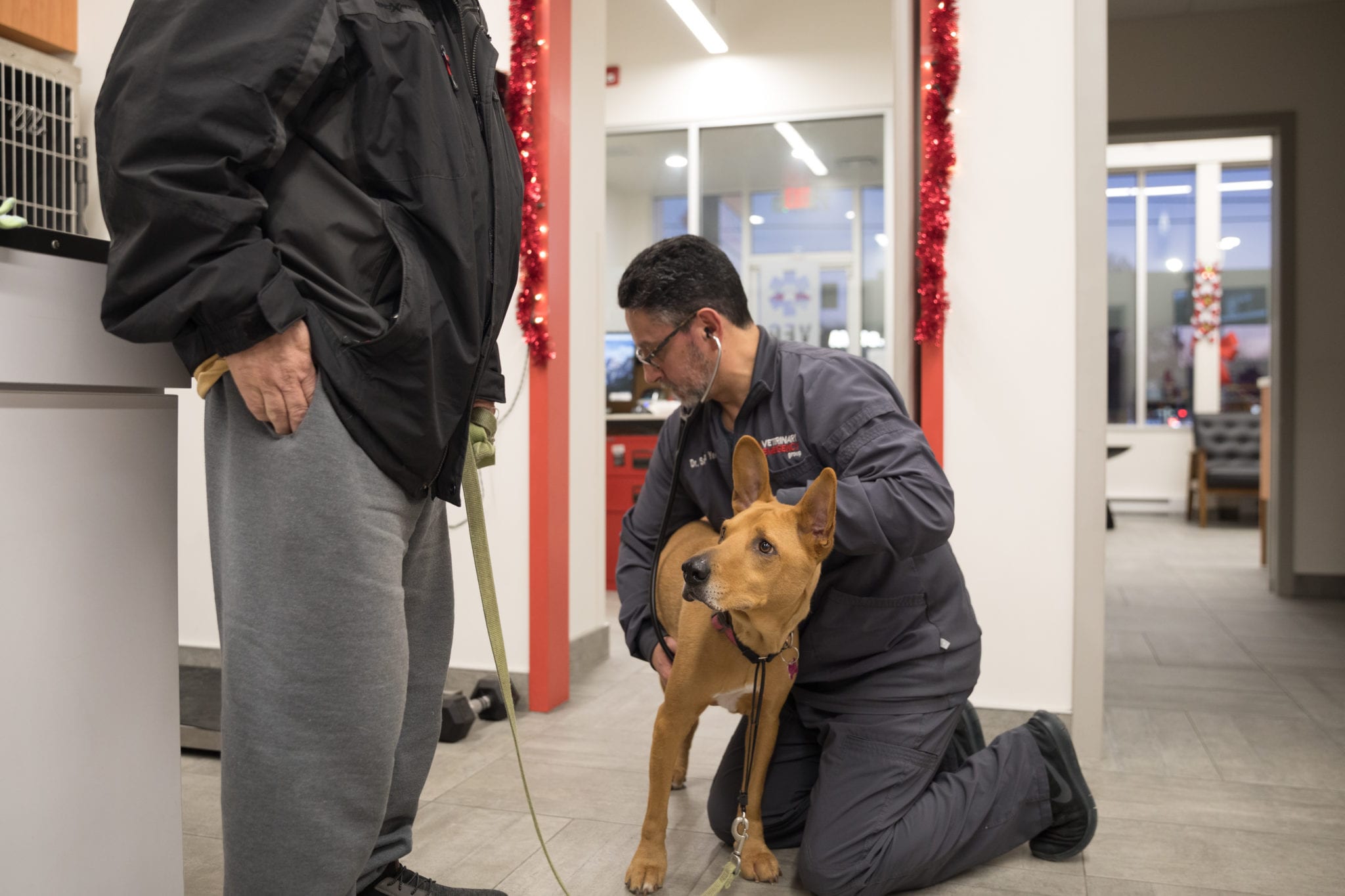
6 Signs of Frostbite in Dogs
Dr. Jennifer Kunisch Miller
Call & Speak with a doctor Open 24/7, Even Holidays!
Walk in today for:
Emergencies
Point-of-Care Ultrasound
Urgent Care
X-Rays
Diagnostics + Testing
End-of-Life Care
Surgery
Treatment + Hospitalization
If you live in a region that gets very cold during the winter, you may have to consider the possibility of frostbite in your dog. Although frostbite is not very common in dogs that are kept as pets—rather than strays—it may still occur, especially if your dog is left outdoors unattended for any period of time in the cold.
Common Signs of Frostbite in Dogs
In this article, we will explain some of the signs of dog frostbite that you should be on the lookout for. If you notice any of these concerning symptoms, reach out to an emergency vet right away for assistance.
6 common signs of frostbite in dogs include:
Skin Turning Blue
One of the most common signs (and first signs) of frostbite in dogs, and in humans as well, is the skin turning blue. It may also look slightly gray with a blue tinge.
If your dog has long hair, you may not be able to see her skin very well, so you should part her fur in several locations and check for this sign of frostbite if you suspect she may be suffering from this condition.
Cold to the Touch
Since the skin will be damaged from the cold if frostbite occurs, your dog’s skin temperature will drop significantly as well. This means the skin will remain cold to the touch, and will seem much colder than it should normally after your dog has been outdoors in cooler weather.
Check your dog’s skin in various locations to see how cold it feels. Does it warm up quickly when you touch it, or does it remain cold for a long time, even with the presence of your body heat? These are all important factors to consider when trying to determine if your dog has frostbite.
Pain and Swelling
As the tissue in your dog’s skin freezes from exposure to extreme cold or long periods of cold temperatures, it will become swollen due to this process. The swelling may be mild, and could be hard to notice; on the other hand, it could become very extreme in some instances.
This frozen skin will also feel very painful to the touch. If your dog shows some of the other symptoms listed here and also cries in pain or becomes aggressive or defensive when you try to touch her skin, this is a good indicator that she is dealing with frostbite.
Blisters
Since the skin is freezing and the tissue is become severely damaged when frostbite occurs, this often leads to blistering or ulceration of the affected areas. If you notice large blisters where there were previously none and your dog is very cold to the touch, this may mean she is dealing with frostbite.
Blisters may not always occur, however, depending on the severity of the condition and the length of time exposed to cold temperatures. This symptom may also be a sign of other problems, so look for it in conjunction with some of the other items on this list.
Blackened Skin
The longer skin is exposed to cold and extreme temperatures, the more tissue will die. When enough tissue has died, the skin will stop looking blue and will instead look black. This means the skin is completely dead and is likely not able to be saved, and it is a symptom of severe, late-stage frostbite.
If you notice this symptom in your dog, she will need immediate emergency veterinary care. This blackening of the skin—also called necrosis—may spread even if she is no longer exposed to cold temperatures, and she will need medical assistance to stop it.
Focused Issues on the Paws, Tail, or Ears
Frostbite in dogs most commonly occurs on the paws, ears, and tail. These are the parts of the body that are most exposed to the cold and may be more likely to become wet in cold conditions, too. The ears and tail may take some time for signs of frostbite to occur, but the paws will likely show signs right away.
Pay close attention to these parts of your dog’s body when she goes outdoors during the winter. If it is wet or snowy outside, dry her ears, paws, and tail frequently. Limit how much time your dog spends outside in the cold.
Some signs of frostbite in dogs can be seen immediately after exposure to cold temperatures or other signs can start to appear a few days after exposure.
Go to the Emergency Vet for Dog Frostbite
Now that you know how to recognize the signs of frostbite in dogs, you can be ready to respond if this ever happens to your furry friend. Of course, going to the regular vet may not always be an option, especially during the winter when holidays are prevalent.
Our emergency vets at VEG are available 7 days a week and on nights, weekends, and holidays so your pet never has to wait to receive the care they need. We understand how confusing it can be to determine if your dog has frostbite and how scary it can be when you discover that they do. Our expert veterinary team will create the best treatment plan for your pet to help with this condition.

